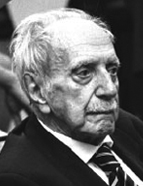

The author’s interpretations of history in general are based on a premise, set out in the epigraph of his first thesis in 1946: knowing man only through his material dimension is insufficient, for he is also made up of a rich spiritual fabric, composed of instincts, feelings and emotions. At a time when economic history was beginning to be highly valued and Brazil was discovering economic science and investing in development, Eduardo França was not only working on a topic of political history, Portuguese royal power, but also affirming his interest in the integral dimension of man, demonstrating to Lucien Febvre a psychological empathy with his behaviour. Just as he considered history from a cognitive point of view to be a whole that could not be fragmented into subspecialties, he also saw the historical process as something integrated, in which a particular section defined on the basis of a problem would only be fruitful if it recovered the set of relationships it raised. This conviction runs through his work and can be found in both his theses and in his study on the “betrayal” of the New Christians in 1624 (1970), in relation to the Dutch invasion of Bahia.
The way he approaches historical phenomena is evident in both theses. In O poder real em Portugal e as origens do absolutismo [Royal Power in Portugal and the Origins of Absolutism], the context is that of royalty over three centuries, including its attributes, conception and evolution, and the problem to be addressed is that of centralisation, especially in the 15th century. In Portugal na época da Restauração, the subject is that “man of his time,” marked by a historical “that is unique to him, living in a century in which the Baroque characterises all elements and manifestations; a Baroque that is in turn set in Portugal and marked by the circumstances of the Restoration. Men, ideas and beliefs move in this context, which appears in all manifestations of the “restorers” of 1640. In both cases, the dynamic par excellence lies in the “problems” – centralisation, the “revolution” of independence – which move within the limits imposed by the broader framework. Everything is precociously structural, before the concept and the word became fashionable.
This work is financed by national funds through FCT - Foundation for Science and Technology, I.P, in the scope of the projects UIDB/04311/2020 and UIDP/04311/2020.
